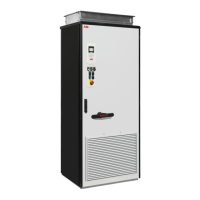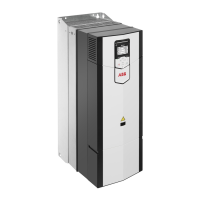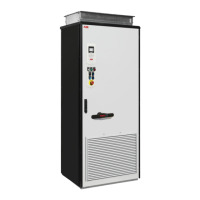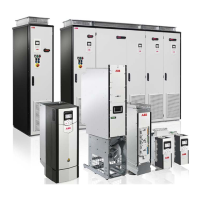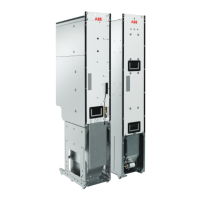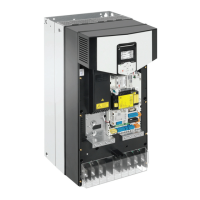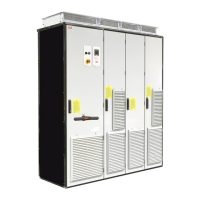The wirings and settings of the SSM function are:
• ABB configures the SSM function at the factory to be permanently active. The user can
change this setting with FSO module parameters.
• The user wires the SSM indication signal (for example, an indication lamp) to the FSO
module.
• ABB sets the safety IO settings for the SSM output at the factory to agree with the circuit
diagrams.
• The SSM positive and negative speed limits are FSO module parameters that the user
must set at the start-up.
Operation principle
■ SLS function
The SLS function limits the motor speed so that it does not exceed the user-defined speed
limits when the function is active. The user defines the SLS limits and trip limits at the
start-up. When the user activates the SLS function, the FSO module sends a SLS request
to the drive . The drive takes the SLS parameters into use and controls the motor speed
accordingly until the user deactivates the SLS request.
If the motor speed is above the user-defined SLS trip limit when the SLS function is activated,
the drive first decelerates the motor speed to the SLS limit. The FSO module monitors the
deceleration to the required speed with the time or ramp monitoring method.
Note: It is a good practice to define the motor speed reference so that it stays between the
SLS limits in the operating situations when the SLS function is active.
If the motor speed reaches the user-defined SLS trip limit, the FSO module activates the
Safe stop emergency (SSE) function. Depending on parameter settings, the SSE function
activates the drive Safe torque off (STO) immediately, or after a deceleration ramp. The
motor coasts to a stop, or decelerates to zero speed.
There are four separate SLS functions in the FSO module with different parameter settings.
In the examples below, and in the delivered default settings of the +Q965 option, the SLS1
function is used.
For more information, see chapter Parameter settings and the FSO module user's manual.
Option description 17
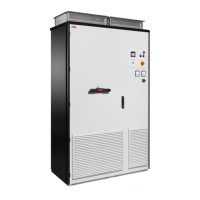
